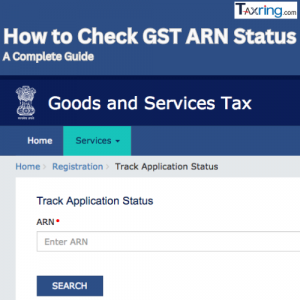
What is Integrated Goods and Services Tax? GST complete guide
Goods and Services Tax (GST) is a comprehensive and unified indirect tax system in India that has transformed the way businesses operate and manage their taxes. Introduced on July 1, 2017, GST replaced various indirect taxes like VAT (Value Added Tax), excise duty, and service tax, creating a seamless tax structure that benefits both businesses and consumers.
In this article, we will dive into the essential aspects of GST, explain its components, objectives, and types, and explore how businesses can benefit from GST services like those offered by Taxring, a leading GST compliance platform.
Integrated Goods and Services Tax (IGST) what is it?
IGST is a component of GST that specifically addresses inter-state transactions.IGST is applied when products or services are sold between states.. The primary feature of IGST is that it ensures that tax is collected by the Central Government and then apportioned between the Centre and the destination state. This mechanism facilitates smoother inter-state trade and prevents tax cascading.
What is GST?
GST, or Goods and Services Tax, is a multi-stage, destination-based tax levied on the supply of goods and services in India. It is designed to bring all indirect taxes under a single umbrella, making the tax system simpler, more transparent, and easier to manage for businesses.
GST is collected at every stage of production or distribution, and the tax is ultimately borne by the consumer. The tax paid on inputs used in the production process can be claimed as Input Tax Credit (ITC), making the system more business-friendly.
Objectives of GST
The introduction of GST aimed to achieve several key objectives:
- Simplification of Taxation: GST replaced a range of indirect taxes, such as VAT, excise duty, and service tax, with a single, transparent tax system.
- Elimination of Tax Cascading: Under the previous system, taxes were levied on taxes, which increased the cost of goods and services. GST, with its Input Tax Credit mechanism, eliminates this cascading effect.
- Increase in Compliance: GST aims to improve tax compliance and widen the tax base, ensuring that businesses pay taxes in a timely and accurate manner.
- Promotion of Inter-State Trade: IGST ensures that businesses can seamlessly operate across state boundaries, boosting the economy and trade within the country.
- Boost to Economic Growth: By simplifying tax processes and encouraging businesses to become more tax-compliant, GST is expected to contribute to overall economic growth.
Types of GST in India
There are four main types of GST in India, each serving different purposes in the tax structure:
- CGST (Central Goods and Services Tax): This tax is collected by the Central Government on intra-state sales, i.e., transactions within the same state.
- SGST (State Goods and Services Tax): Collected by the State Government on intra-state sales. The total GST in such cases is divided equally between CGST and SGST.
- IGST (Integrated Goods and Services Tax): Applied on inter-state sales, IGST is collected by the Central Government, and the revenue is shared between the Centre and the destination state.
- UTGST (Union Territory Goods and Services Tax): This applies in the Union Territories of India and functions similarly to SGST but is levied by the Union Territory Government.
GST Rules and Compliance
GST rules and regulations are governed by the Goods and Services Tax Act and include provisions related to the following:
- GST Registration: Businesses with a turnover exceeding the prescribed threshold limit must register for GST.
- GST Returns: Businesses must file regular GST returns, including GSTR-1 (details of outward supply) and GSTR-3B (summary of sales and purchases).
- GST Invoices: GST-compliant invoices must be issued for all sales transactions, detailing the GST charged on the goods and services.
- GST Payment: Businesses are required to pay GST on the supply of goods or services and can claim Input Tax Credit for taxes paid on business inputs.
- GST Audit and Inspection: GST audits are conducted to ensure businesses are in compliance with GST laws.
Taxring GST Services
Taxring is a leading provider of GST compliance solutions designed to help businesses efficiently manage their tax obligations. Whether you’re a small business or a large enterprise, Taxring offers a variety of services to make your GST experience hassle-free:
- GSTR Filing: Taxring automates GSTR filing, ensuring timely and accurate submission of GST returns, reducing the chances of errors and penalties.
- Input Tax Credit Management: Businesses can optimize their Input Tax Credit (ITC) with Taxring assistance, ensuring that no credits are missed and tax liability is minimized.
- GST Consultancy: Taxring provides expert consultancy to help businesses navigate GST laws, resolve disputes, and improve their overall tax efficiency.
- GST Automation: Automating GST filings and tax management processes reduces manual intervention, saving time and resources.
- Compliance Updates: Taxring keeps businesses informed of the latest changes in GST laws and regulations, ensuring continuous compliance.
Conclusion
GST has fundamentally reshaped India's tax landscape by simplifying tax structures, promoting ease of doing business, and reducing the overall tax burden on consumers. However, GST compliance can be complex, especially for businesses managing large volumes of transactions.
By leveraging professional GST services like those offered by Taxring, businesses can automate their tax filings, optimize their Input Tax Credits, and stay compliant with changing GST regulations. If you’re looking for a seamless way to manage your GST obligations, Taxring can make your tax experience smooth and hassle-free.
For more information on GST services or to get personalized GST support, visit Taxring
Related article : How to track your GST pyment status?
Frequently Asked Questions (FAQs) about GST
1. What is GST in India?
GST is a comprehensive indirect tax levied on the sale of goods and services across India, designed to simplify and streamline the tax structure.
2. When was GST introduced in India?
GST was introduced on July 1, 2017, with the aim of creating a unified tax system across India.
3. Is GST a direct or indirect tax?
GST is an indirect tax, which means the tax burden is passed on to the end consumer.
4. How does GST work for inter-state sales?
For inter-state sales, IGST is charged, which is collected by the Central Government and shared between the Centre and the destination state.
5. What are the types of GST?
The four types of GST in India are CGST, SGST, IGST, and UTGST.
6. What is Input Tax Credit (ITC) under GST?
Input Tax Credit allows businesses to claim credit for taxes paid on inputs used in production, reducing the overall tax liability.
7. What is the Composition Scheme in GST?
The Composition Scheme allows small businesses to pay a fixed, lower rate of GST and file quarterly returns instead of monthly filings.
8. How is GST collected in intra-state sales?
For intra-state sales, GST is collected as CGST and SGST, with the tax split equally between the Central and State Governments.
9. Does GST apply to all goods and services?
Most goods and services are covered under GST, but certain items like alcohol, petroleum products, and electricity are taxed separately.
10. How is GST paid?
GST payments are made online through the GST portal, where businesses file returns and remit payments to the government.




